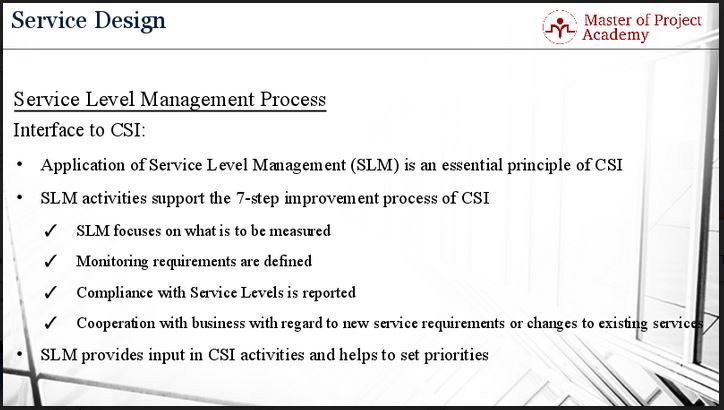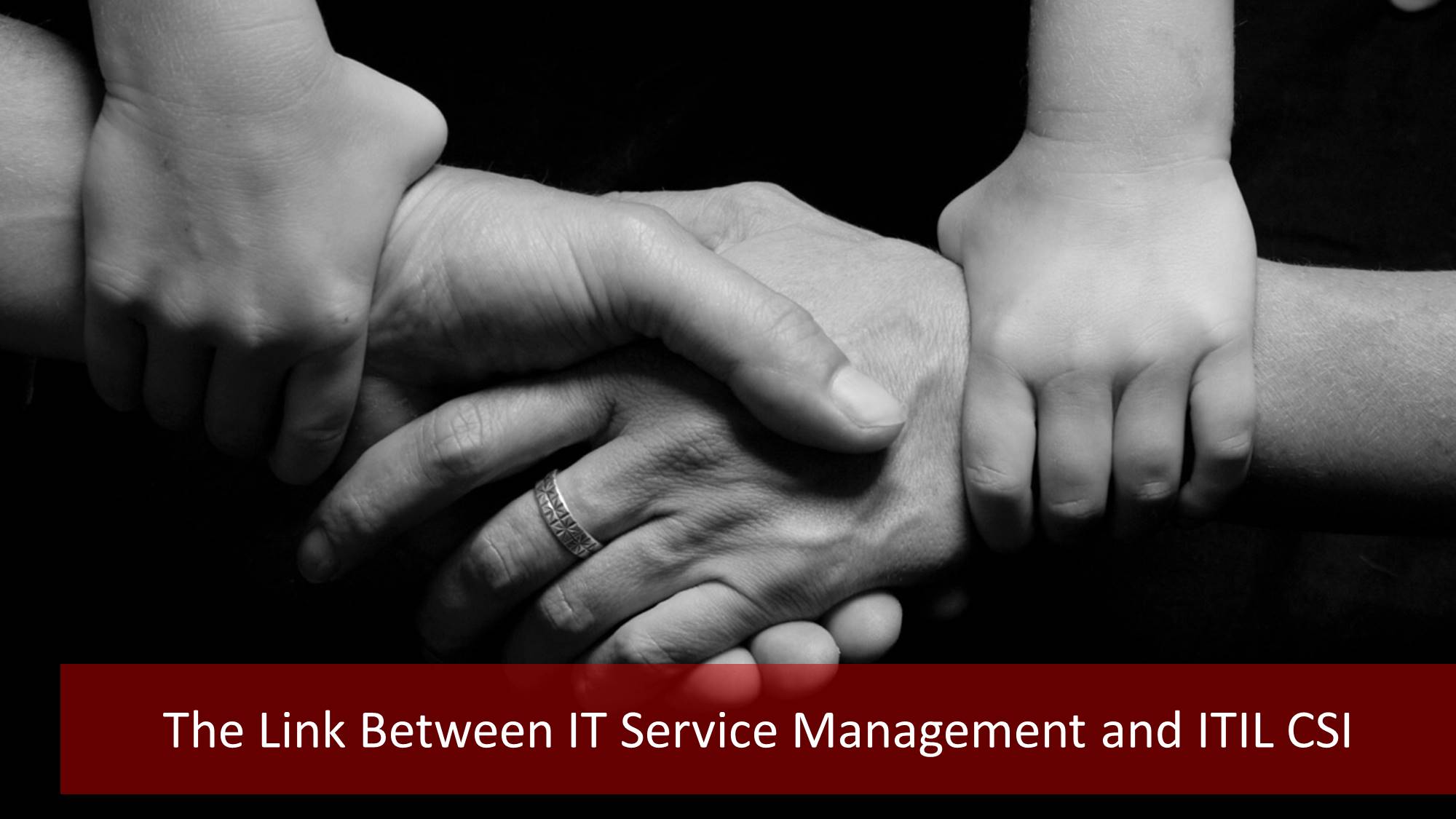ITIL Service Management basically aims to meet the desired and expected service levels. And the continual service improvement stage (ITIL CSI) of the ITIL service lifecycle aims to improve services progressively. The interaction between the service lifecycle stages and service management are discussed in detail in the ITIL Online courses and also in free ITIL courses. As described in such courses, the application of service level management is an essential principle of ITIL CSI. As long as you meet the expected, planned and desired service levels for the provided services, you will meet the objectives of ITIL CSI as well since it aims to improve services constantly to a better level. The continual service improvement process also aims to exceed the service level targets set in the ITIL service level management and subsequently new targets will be set during ITIL service management reviews.
Service Management Support CSI Process Steps
Service management and CSI is intricately intertwined. Specifically, service level management processes support the 7 step ITIL CSI process. The seven steps of ITIL CSI process are the following:
- Identify the approach for improvement.
- State what will you measure.
- Collect the Data.
- Process the data.
- Analyze the data and information.
- Present and use the information.
- Implement corrective or remedial activities
Each of these activities is supported by ITIL Service Management. These are the activities of service level management which support the 7 step improvement process.

Service management supports what needs to be measured in CSI
ITIL Service Management and specifically service level management focuses on what is to be measured. The basics of 7 step the ITIL CSI improvement process is the measurement and analysis of the services. You need to measure the service levels to see the weaknesses and strengths and take proper actions for improvement respectively. In this respect, the service level management process determines what needs to be measured for services and the processes and support the 7 step improvement process of ITIL CSI.
Service management defines the monitoring requirements for CSI
During the ITIL Service Design stage, the metrics for determining the performance of the service is determined. All the aspects that can affect the performance of the service are identified and metrics are defined to monitor the service. ITIL service management and specifically the service level management process defines how a service or process will be measured, what the metrics will be and which methods will be used to measure and monitor the service levels. These activities support the ITIL CSI as well. During the CSI stage of the ITIL lifecycle, service levels are continually monitored according to the metrics designed during the Service Design stage of the ITIL service lifecycle. The CSI process measures the performance of the service according to these metrics and determines which metrics could be improved upon.

Reporting of compliance with service levels support the CSI process
Compliance with service levels is reported as an activity of the ITIL service management processes. In order to target a better service level, the current targets must be met first. And this is ensured by ITIL service management processes during which the compliance with the agreed service levels in SLA is reported. If the performance of the service levels does not comply with the agreed service level targets in the SLA, the CSI process kicks in to determine how the service can be improved so that it can reach its service level targets. This activity supports 7 step ITIL CSI process in terms of checking how far the IT service provider is ahead or behind on its targets.
Cooperation with the business through service management supports the CSI process
The ITIL service management processes cooperate with the business regarding new service requirements or changes to existing services. New services are that are changed to existing services are part of an improvement process in which better services are provided to the customer. Therefore, this activity of the ITIL service management processes also supports the 7 step improvement process of ITIL CSI stage. The same holds true for changes to existing services. ITIL service management supports the ITIL CSI stage when changes are made to existing services to better meet the requirement of the business. The IT service provider needs to liaise with the business during the ITIL CSI stage to ensure that the improvements are aligned with the business’s needs.
Service management provides input to the CSI activities
And the last point about the service management and continuous service improvement interface is that the service management processes such as the service level management process provides input in continuous service improvement activities and helps set priorities. There can be several points, weaknesses or targets that have an IT service provider must reach. But there will be a predecessor and successor relationship of these activities as well. Service management processes determine the priority and order of activities to improve the services progressively in collaboration with the CSI stage.
ITIL service management is an important part of the ITIL service lifecycle, from ITIL Service Strategy to ITIL CSI. Service owners need to continually interact and collaborate with the business to ensure that targets that are set, measured and improved upon during the ITIL Service Design and ITIL CSI stages are aligned with the business needs. All of this is achieved through proper ITIL service management. There is an interaction between the different stages of the ITIL service lifecycle and in this interaction, the ITIL CSI stage encompasses all the other stages of the service lifecycle. This means that the CSI process will be affected by service management processes throughout the service lifecycle. ITIL service management and service level management does not only support the seven steps of the ITIL CSI process, but also the entire ITIL service lifecycle processes.
Review by: Debra Rogers


5 thoughts on “The Strong Link Between ITIL Service Management and ITIL CSI”
Comments are closed.